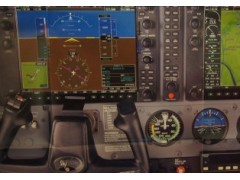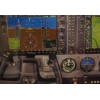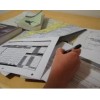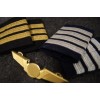Getting an instrument rating is usually the next step after you obtain your private pilot certificate. Right now, you are limited to basic VFR weather minimums, like 1,000 feet above, 500 feet below, and 2,000 feet horizontal plus 3 SM visibility for most airspace classes. With an instrument rating, weather won’t hold you back as it does now since you’ll be able to file and fly IFR, which means using your instruments only for flight. With effective instrument training, you’ll obtain the necessary proficiency needed to not only pass the checkride but to comfortably fly through clouds and precipitation, know how to work with your instruments confidentially, have better risk assessment and knowing about hazardous weather and how to deal with it, and about advanced RNAV systems as well as archaic NDB’s. Us flight instructors and examiners don’t like to call it one, but essentially it is an “all-weather pass”, however, this comes with incredible responsible and that is wher advanced risk management and aeronautical decision making comes into play.
SOME THINGS YOU SHOULD KNOW BEFORE STARTING
Medical Exam: If you are in Palm Beach County, I recommend getting your medical exam done through Dr. Gerald Weingarden, (561) 626-5635, 8033 Cranes Point Way, West Palm Beach, Florida 33412. Make sure you are able to renew or obtain a medical certificate before starting your instrument training.
Foreign Nationals: This course is considered part of the Alien Flight Student Program and therefore anyone who does not have US Citizenship must complete a TSA clearance. For more information on this program, please visit AOPA’s Guide to TSA’s Alien Flight Student Program. When ready, you should sign up using this website and selec me, Iovine J – Independent CFI, as the provider. The cost is about $150 and you’ll be required to be fingerprinted. This includes Green Card holders.
US Citizens: You must have your original birth certificate or US Passport (valid) and a government issued photo identification, such as a driver’s license, prior to beginning flight training (excluding the discovery flight). This endorsement is free of charge and can be given as soon as I verify the documents are valid and they belong to you.
What You’ll Learn
How to fly with and be proficient with referencing solely the instruments
Advanced usage of VOR’s and NDB’s
Proficiency with advanced RNAV systems and APV approaches (if GPS and WAAS equipped)
Planning and filing IFR flight plans and the ATC system
Thorough knowledge of weather, forecast charts, and hazardous weather
Chart reading and understanding of DP’s, STAR’s, and approach plates
Risk assessment, management, cockpit workload/single resource management, and aeronautical decision making as well as crew resource management
Emergency scenarios
What You Can Do with an Instrument Rating
Fly commercially (for compensation or hire) greater than 50nm and at night once you have your commercial pilot’s certificate
File and fly under IFR
Fly Special VFR at night time
Be eligible to apply for a flight instructor certificate
Meet requirements to rent out certain aircraft (some Cirrus rental schools require an instrument rating to meet insurance requirements)
Open an IFR flight plan in flight to pick up an approach to enter an airport that is currently in IFR or Low IFR (LIFR) conditions
Be eligible to apply for an Airline Transport Pilot certificate
Minimum Requirements
Per part 61.65, hold a minimum of a private pilot certificate or be simultaneously applying for one
Be able to read, write, understand, and speak English
Receive and log ground instruction required in this part for the instrument rating (home study courses are discouraged for a primary base of studying this complex material, but can be very useful for reference and review)
Receive an endorsement fro an authorized instructor to take the practical exam
Take and pass the written exam (IRA)
Aeronautical Experience
50 hours of PIC cross country time, 10 at least in an airplane
40 hours of actual or simulated instrument (can use time from private training)
15 hours of actual or simulated instrument time must be done with an instructor
3 hours of checkride preperation within 2 calender months of the practical exam
Cross country flight planning with an authorized instructor on an IFR flight plan filed with ATC which includes a flight of at least 250nm along airways or directed by ATC, three different kinds of approaches at each airport














